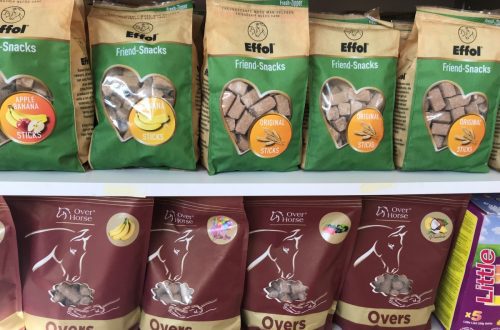Types of bedding for a stall (comparative characteristics)
One of the foundations of a comfortable standing for a horse is a well-chosen bedding option, because it is in the stall (even with long walks) that your pet spends a lot of time.
Ammonia, hydrogen sulfide, carbon dioxide and other substances that are part of the air have a huge impact on the condition of the animal. So, for example, even non-toxic doses of these gases, present within acceptable limits, over time can lead to chronic intoxication of the animal organism, which will lead to a decrease in their immunity and performance.
The main purpose of using a bedding is to provide the animal with the opportunity to lie on a dry, soft and warm surface.
To choose the right bedding, you need to consider the following factors (1):
– the tendency of the horse to allergies, the presence of problems with breathing or hooves;
– stall size, floor material and quality;
– the amount of time spent by the animal in the stall;
– and, importantly, the financial capabilities of the owner of the horse.
The material of the floor is of the utmost importance. If high-quality, thick rubber mats are lined in the stalls, then it is enough to cover only half of the stall with bedding, organizing a soft sleeping place for the horse. If the floor is concrete, then a thick layer of bedding will be required to protect the horse from the cold and avoid slipping of the hooves.
You don’t have to automatically agree to what the club has to offer; however, it must be taken into account that the cost of the stay includes the presence of a certain bedding, so if you want to use other material, you should discuss this with the administration in advance.
Most often in Russia and the CIS countries, sawdust and straw are used as bedding, although other types of it exist (for example, paper, rubber mats, vacuum superabsorbent materials, peat).
Professor, Ph.D. R. A. Kamalov and zoo engineer N. A. Fonina conducted a study (2), comparing two identical stables in which different bedding was used, in order to understand the effect of one or another bedding on the condition of animals.
It turned out that in the air of the stable that purchased sawdust for bedding, the ammonia content was 1,66 times less than in the stable that used straw. At the same time, the difference in the content of hydrogen sulfide and carbon dioxide in the air of the stables was 1,75 and 1 times, respectively.
Studies have shown that sawdust contributes to a significant reduction in the content of microorganisms in the air of the stable: in during the experimental period, their number in the air of the stable with sawdust bedding averaged 62 with fluctuations from 32 to 91 thousand microbial bodies per m3. In the air of the stables with straw bedding, their number was on average 2 times higher.
Interestingly, however, the animals in the straw-bedded stable had a lower percentage of respiratory illnesses.
The results of the study are shown in table (3):
The fluctuations in the values given in the table indicate that the quality of the straw and sawdust used cannot be ignored.
So, the quality of straw absorption strongly depends on its type and the length of the cut (the shorter, the worse it absorbs).
Wheat straw absorbs better than all other types of straw, is well eaten by horses, besides, it is the cheapest.
Rye straw absorbs well, but is poorly eaten by horses.
Barley straw absorbs worse and is poorly eaten by horses.
Oat straw is not at all suitable for bedding, as it is fodder.
All these types of straw have a high degree of dustiness. The most dust-free is flax straw, but it is also the most expensive.
One of the undesirable properties of sawdust is also their high dust content, which primarily depends on the particle size and moisture content of the sawdust. Sometimes sawdust treated with harmful chemical solutions gets into the bedding, which can pose a health hazard to animals.
According to A.F. Kuznetsov et al., dry sawdust has a high moisture capacity (4). According to M. S. Naydensky et al., the moisture capacity of spruce sawdust is 490, birch – 520% (5).
When kept on wet sawdust, animals soften their hooves. Small sawdust is stuffed into the hoof grooves, contributing to the decay of the frog. Both dry and too small sawdust is very dusty. In addition, they clog into the hair, tails and manes of horses, which makes cleaning the animals more laborious.
Wet sawdust at high temperature becomes a good environment for the development of fungi and microorganisms.
The table below shows the pros and cons of bedding types such as peat, paper and pellets. (6):
Thus, when choosing a bedding, one must take into account not only the initial pros and cons of a particular material, but also pay attention to its quality: dust content, humidity, etc.
(1) Stall bedding. Publication: http://equinemanagement.ru/podstilka-dlya-dennika/.
(2) Kamalov R. A., Fonina N. A. Influence of sawdust from cutting chipboards (chipboard) on the stable microclimate. Vestnik RGAZU, 2001. Part 1.
(3) Kamalov R. A., Fonina N. A. Influence of sawdust from sawing wood chipboards (chipboard on stable microclimate. Ibid.).
(4) Kuznetsov A.F. Hygiene of animals: textbook. / A. F. Kuznetsov, M. S. Naidensky, A. A. Shukanov, B. L. Belkin. — M. : Kolos, 2001.
(5) Mozzherin V.I. Hygiene of animals / V.I. Mozzherin, A.F. Kuznetsov, N.K. Kirilov, A.A. Shukanov. – Ufa: Reaktiv, 1997.
(6) Based on the publication http://equinemanagement.ru/podstilka-dlya-dennika/.
Victoria Donskaya, KSK “Golden Horse”, Mr. Taganrog





